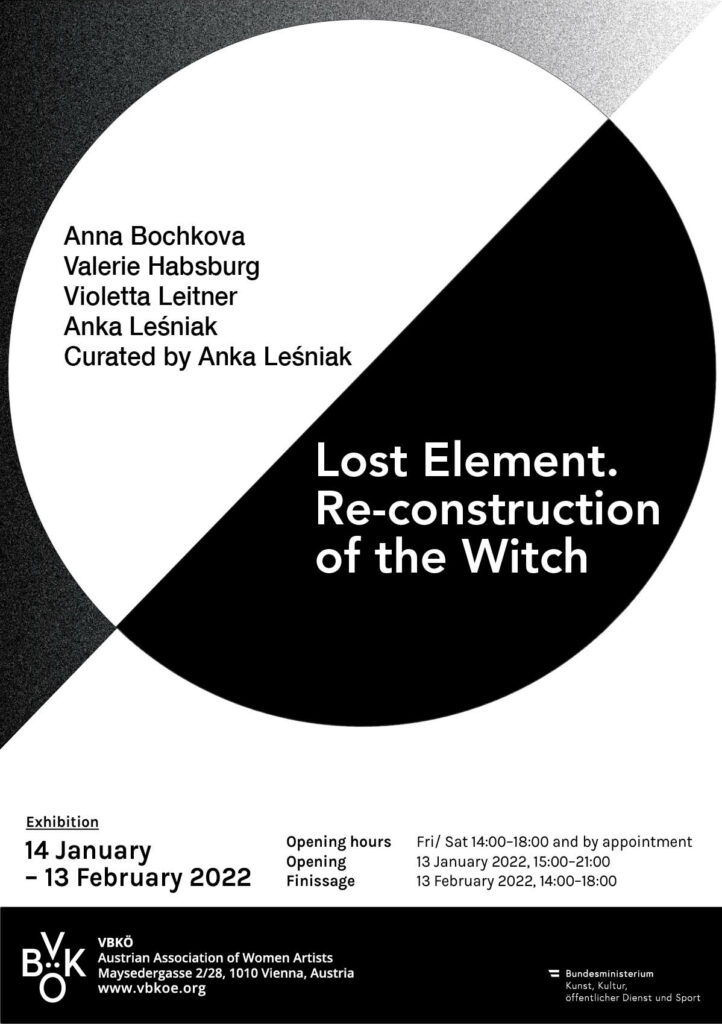Lost Element. Re-construction of the Witch
Exhibition
14 January – 13 February 2022
Opening hours: Friday & Saturday: 14:00 – 18:00 and by appointments
Opening: 13 January, 15:00 – 21:00
Finissage: 13 February, 14:00 – 18:00
Artists: Anna Bochkova, Valerie Habsburg, Violetta Leitner, Anka Lesniak
Curated by: Anka Lesniak
The exhibition is the next chapter of a collective artistic investigation on the life and damaged or lost artworks of Teresa Feodorowna Ries (1866-1956). This sculptor of Jewish-Russian origin was one of the prominent artists of the Austro-Hungarian Empire and a few times also exhibited in VBKÖ’s exhibitions. In 1938, her studio was ‘Aryanized’ and taken over by Gustinus Ambrosi, while she fled to Switzerland, forced to leave her professional life and artwork behind. Among the numerous works left in her studio, there was a marble figure of the Witch at her toilette before the Witches’ Sabbath (1895). The sculpture depicts a naked woman looking straight into the viewer’s eyes and smiling maliciously while cutting her toenails with big scissors. Although witches were not a rare inspiration for artists at the turn of the 19th and 20th centuries, Ries’s sculpture was an extraordinary example of an artwork challenging the old patriarchal order. Her Witch is a symbol of feminine power. The figure is full of vigour and eroticism, and at the same time a rebel who challenges the clichés of representations of women in art and goes beyond stereotypes. Perhaps this was the reason for several acts of vandalism on this sculpture during the next decades, when it was left unattended in the outskirts of Vienna until the 1990s. Although the hand with the scissors is still missing, the Witch has been restored by the Vienna Museum and is exhibited more and more frequently. The Witch by Teresa Ries is a witness to history, of political and social changes. The damaged sculpture is an accusation against the HIStory, institutions, politics towards women (artists), antisemitism and xenophobia. However, it has an inspiring potential for political and social changes and the emancipation of minorities. As a part of a research-based art project, the exhibition also poses the question how it is possible to symbolically reconstruct the lost element of the Witch through contemporary cultural discourses and interpretations. Through the presentation of the work, based on historical research and archives with the use of new media, the exhibition opens the portal between the past and contemporary women’s art practices.
More about the project at the TFR archive website: https://teresafeodorownaries.com/

